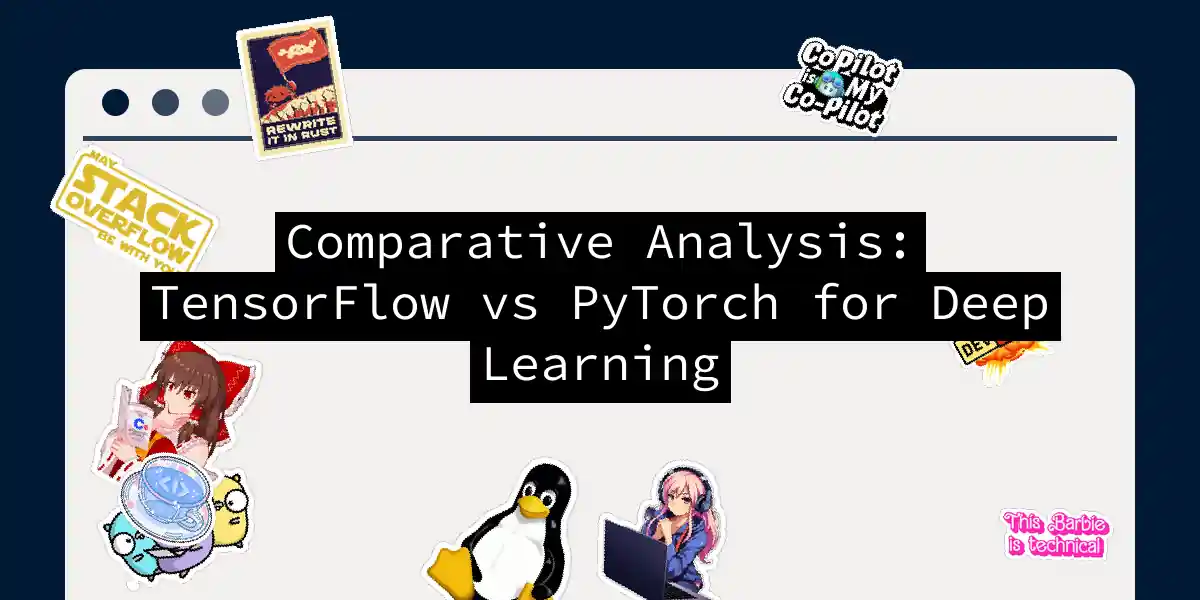When it comes to the world of deep learning, two names stand out like giants in a crowded room: TensorFlow and PyTorch. These frameworks have been the subject of heated debates, with each having its own set of fervent supporters. But which one is the best? Well, that’s a bit like asking whether Batman or Superman would win in a fight – it depends on the context and what you’re trying to achieve.
Understanding PyTorch and TensorFlow
Let’s start with the basics. Both PyTorch and TensorFlow are powerful tools for deep learning, but they approach the problem from different angles.
PyTorch
PyTorch, created by Facebook’s AI Research lab, is known for its simplicity and user-friendliness. It’s like the cool kid in school who makes everything look easy. PyTorch uses dynamic computation graphs, which means you can change the model architecture on the fly. This is particularly useful for researchers and developers who need to experiment a lot.
Here’s a simple example of how you might define a neural network in PyTorch:
import torch
import torch.nn as nn
import torch.optim as optim
class Net(nn.Module):
def __init__(self):
super(Net, self).__init__()
self.fc1 = nn.Linear(5, 10) # input layer (5) -> hidden layer (10)
self.fc2 = nn.Linear(10, 5) # hidden layer (10) -> output layer (5)
def forward(self, x):
x = torch.relu(self.fc1(x)) # activation function for hidden layer
x = self.fc2(x)
return x
net = Net()
TensorFlow
TensorFlow, on the other hand, is Google’s brainchild and is known for its robust production capabilities and support for distributed training. It’s like the reliable older sibling who always gets the job done. TensorFlow uses static computation graphs, which require you to define the entire model architecture upfront. This can be less flexible but allows for better optimization and performance at scale.
Here’s an example of how you might define a similar neural network in TensorFlow:
import tensorflow as tf
model = tf.keras.models.Sequential([
tf.keras.layers.Dense(10, activation='relu', input_shape=(5,)),
tf.keras.layers.Dense(5)
])
model.compile(optimizer='adam', loss='mean_squared_error')
Ease of Learning and Use
When you’re starting a new project, having an easier learning curve can be a lifesaver. PyTorch is generally simpler and more “Pythonic,” making it a favorite among beginners and researchers. The dynamic computation graph in PyTorch means you can change things on the fly, which is great for experimentation.
TensorFlow, however, has a steeper learning curve due to its static computation graph. But, with the introduction of TensorFlow 2.0, it has incorporated more of PyTorch’s dynamic nature through its Eager Execution feature, making it more accessible.
Performance and Scalability
Performance and scalability are crucial when you’re dealing with large-scale models. Here, TensorFlow shines. It can handle distributed training with ease, making it a go-to choice for production environments. TensorFlow’s integrated tool, TensorBoard, is also a powerful tool for visualization and debugging.
PyTorch, however, is catching up. Recent updates have improved its scalability, and it now supports distributed training and multi-GPU training. But, for now, TensorFlow still holds the lead in deploying large-scale models in production.
Model Availability and Community Support
When it comes to model availability, PyTorch is the clear winner in the research landscape. Almost 92% of models available on HuggingFace are PyTorch exclusive, with over 45,000 PyTorch-exclusive models added in 2022 alone.
PyTorch has a strong community and industry support, backed by Meta and a vibrant community of academic researchers and industry professionals. This community support is crucial for continuous evolution and contributions to the framework.
Deployment
Deployment is where TensorFlow really shows its strength. It has a litany of associated tools like Serving and TFLite that make the end-to-end deep learning process easy and efficient. For example, TFLite allows for local AI in conjunction with Google’s Coral devices, which is a must-have for many industries.
PyTorch, on the other hand, is still in the process of developing its deployment tools. PyTorch Live focuses on mobile applications, and TorchServe is still in its infancy. However, the playing field is more even for applications running in the cloud.
Debugging and Custom Features
Debugging is an essential part of any development process. PyTorch makes debugging easier using standard Python debugging tools. You can tweak the neural network on the fly, making it easier to optimize the model.
TensorFlow, however, requires a special debugger tool to examine how the network nodes do calculations at each step. This can be more complex but allows for more optimized models. If you need custom features in your neural network, TensorFlow might be a better option due to its flexibility.
Performance Comparison
Here’s a quick look at how PyTorch and TensorFlow compare in terms of performance:
- Training Speed: PyTorch generally outperforms TensorFlow in terms of training speed, especially when using 32-bit floats. For models like AlexNet, VGG-19, ResNet-50, and MobileNet, PyTorch shows better throughput.
- Memory Usage: TensorFlow might show a bit more efficiency in memory usage, especially in larger and more complex models. However, PyTorch’s memory usage is still manageable and often necessary for its dynamic computation graphs.
Conclusion
So, which framework is better? Well, it depends on what you’re trying to achieve.
- For Research and Prototyping: PyTorch is your best bet. Its dynamic computation graphs and ease of use make it perfect for experimentation and rapid prototyping.
- For Production and Deployment: TensorFlow is the way to go. Its robust production capabilities, support for distributed training, and tools like TFLite make it ideal for large-scale applications.
Here’s a simple flowchart to help you decide:
In the end, both PyTorch and TensorFlow are powerful tools that can help you achieve your deep learning goals. It’s just a matter of choosing the right tool for the job. So, go ahead, experiment with both, and see which one becomes your new best friend in the world of deep learning.
